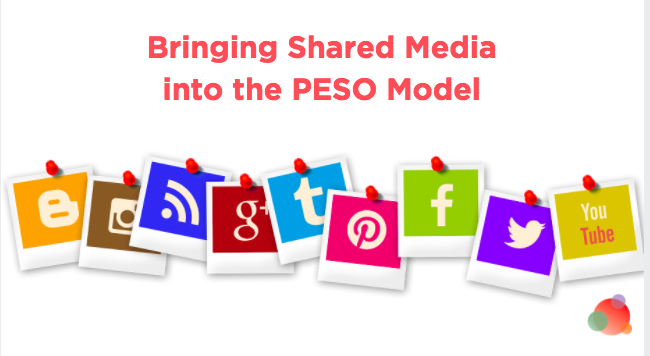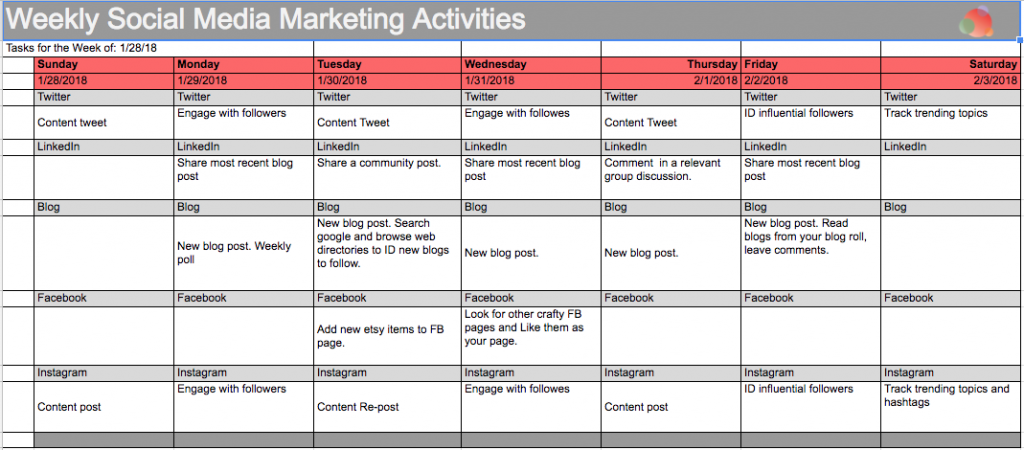 It is the fourth installment of the PESO model series—and it’s time to discuss shared media.
It is the fourth installment of the PESO model series—and it’s time to discuss shared media.
It seems like every day brings with it a new shared media channel or trending meme. Have you started using Instagram hashtag followings yet? What’s with the Snapchat hot dog craze? And, seriously, Facebook is re-launching the “poke” feature?
It’s tough to keep up. Every day there is something new and fun and cool that other people are doing on shared media, leaving you with a sense of FOMO.
We all get FOMO, but it’s a terrible way to decide how to spend your time on shared media and to allocate your content budget. Instead, you need to “fish where there are fish.”
In shared media terms, that means to be where your audience and community already talk about you, your competitors, and industry topics, and engaging with them there.
Where Do Your Prospects Hang Out?
So how do you know which social channels your customers and prospects use?
Here are a few foolproof ways to find out:
- Search. Take your top 10 keywords and search for them on Google and through a social listening tool such as BuzzSumo. Where do conversations around those topics occur? Look for specific shared media responses that turn up, community sites, news articles, and blogs.
- Analyze. Log into Google Analytics and look at your referral report. Which social channels send you the most traffic?
- Survey. Conduct an audience survey and ask them to share where they get their information online and which social channels they use.
- Conversation. Slip a simple question about shared media channel usage into your next conversation, and ask your customer success team to do so, as well.
Once you know where your audience hangs out online, you can start to engage with them and build relationships. In the course of those conversations, you can use unique URLs to understand what those visitors are doing on your site once they get there.
Over time, you’ll be able to fine-tune your shared media activities to not only to focus on the channels sending you the most visitors but on the ones sending you the RIGHT visitors.
And that’s when your shared media program will start showing some serious ROI.
It Takes a Simple Weekly Plan
How much time have you spent on shared media activities today? Including writing and reading blog posts, responding to brand mentions, posting status updates, and even getting lost in your rabbit hole?
Too often we can fall down the hole—logging into Facebook to check for comments on the brand page, for instance—and emerging hours later with very little to show for it other than a rapidly filling email inbox and a daily task list without anything checked off yet.
(I mean, not that I’ve ever done that.)
To avoid this time trap, I allocate a set amount of time each day to reading and responding to shared media. The rest of the day? You will not see shared media open anywhere around me. I know my weaknesses!
Shared media is critical to our communications plan at Spin Sucks, but we don’t let it take over more than its fair share of our time.
And we make sure all shared media activities are part of an integrated PESO communications strategy.
Here’s a simple weekly plan example:
We find it doesn’t need to be much more detailed than that—and we use CoSchedule to keep it all in one spot.
You can use it to curate and schedule your shared media, and to keep your editorial calendar and your marketing workflows and your emails and pretty much anything you will do in your PESO model program. It’s the bomb.
Shared Media Rules of Thumb
Now that we have THAT out of the way, it’s easy to get overwhelmed with what to include in your editorial calendar. Shared media is definitely not a one size fits all, but there are some good guidelines.
Start with these rules of thumb…and then test for your audiences:
- Twitter. On the day your content is published, tweet the link four times (three hours apart). On day two, tweet it twice, and once on day three. CoSchedule will also allow you to create templates for specific kinds of content to be shared. I have a friend who has a template for an entire year. That’s some serious mileage!
- Facebook. While the algorithm at Facebook continues to change so only those who pay to get their content to show up in the news feeds of their followers, you don’t want to ignore your page. Post your content there once a day, and then consider sponsored content as part of your paid media campaign. Incorporating Facebook Live or a private Facebook group is another way to increase your opportunity to reach your brand fans.
- Instagram. Instagram is Facebook and Facebook is Instagram. But you shouldn’t use them in the same way. First off, Instagram allows you to tell a very visual story in a way Facebook does not. It also has, aptly named, Stories, which allow you to create short video snippets to engage your audience in new and interesting ways.
- LinkedIn. Post once a day to your account, your company showcase page, and to the groups, you belong to. I also recommend repurposing your content on LinkedIn Pulse. We publish there and on Medium twice a week (Tuesdays and Thursdays) and repurpose the most popular content from the month before.
- The Others. It’s important not to ignore YouTube, TikTok, StumbleUpon, Reddit, Pinterest, Snapchat, Digg, and the others. Test post in those spots just once a day and see what happens. For instance, if you have a nice image on a piece of content and you pin it to a board on Pinterest, it could help drive a good amount of new readers.
Here is a fun and easy shared media template you can download so you don’t have to start from scratch.
What’s Coming In the PESO Model Series
This is the fourth in a series of blog posts about the PESO model, how to plan for it, how to implement it, and what to measure.
In the first article, you learned what the PESO Model is and why communicators must embrace it.
In the second, you learned why owned media is the foundation of a successful PESO model and how to get started.
In the third, you learned how to integrate earned and owned media for SEO dominance and measurable results.
By the end of the series, you’ll also have learned:
- How to use paid media in your communications programs and what to measure
- How to bring everything together to build authority, credibility, and thought leadership
- Metrics, a dashboard, and providing results to the executive team
Here’s the PESO Model series line-up in one easy-to-click format:
- What Is the PESO Model?
- The PESO Model: Start with Owned Media
- The PESO Model: Where and How Earned Media Fits In
- Why Paid Media Belongs With Communicators
- Bringing It All Together with Thought Leadership
PESO Model Certification
Are you ready to take your career and results to the next level?
Do you want to learn how to build and scale an integrated communications program? One which drives real business results and shows the PR value clients care about?
Do you want to be able to measure your efforts so you can show the CEO your work directly drives sales?
Learn how you can become PESO Model Certified today.
Learn More About PESO Certification
